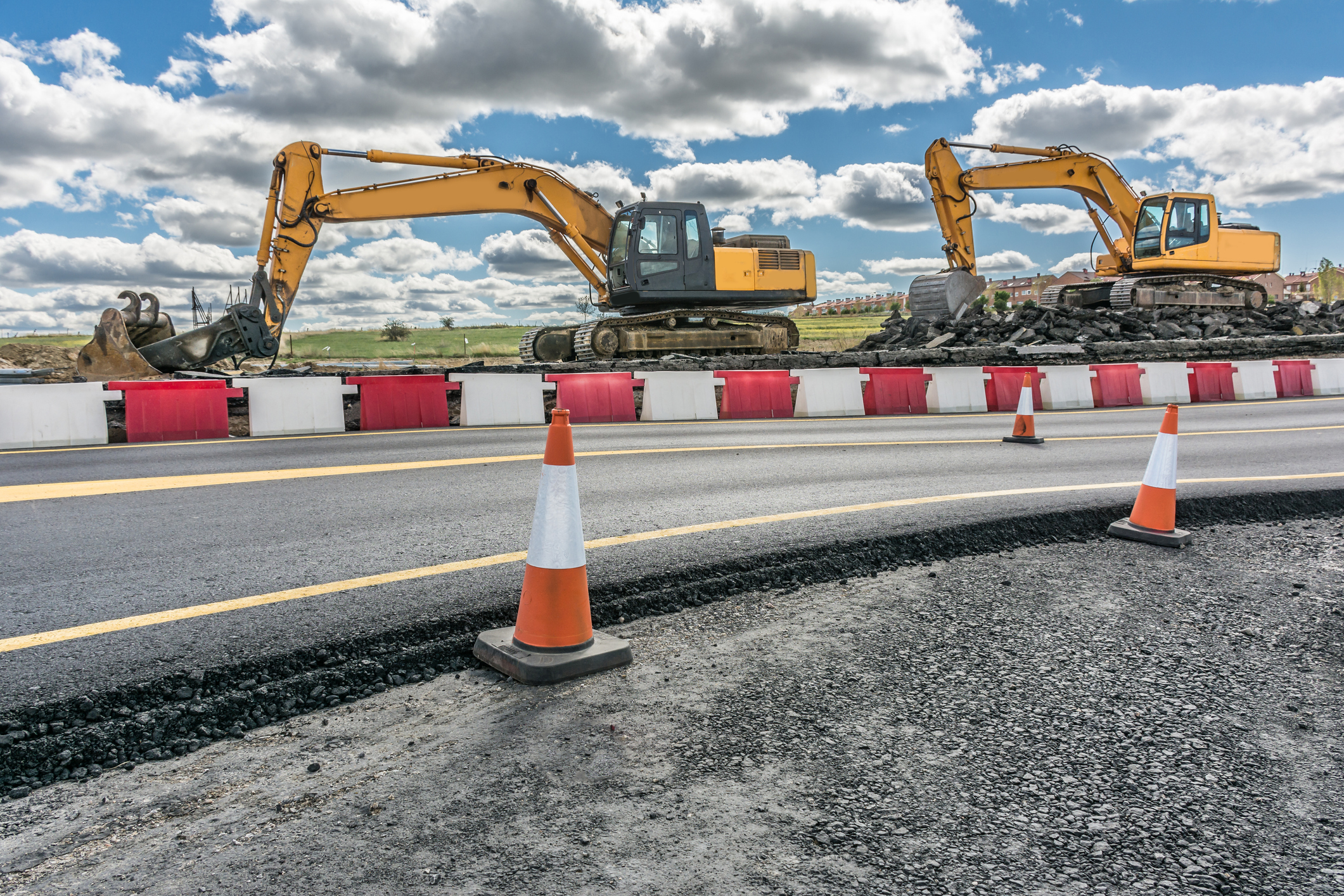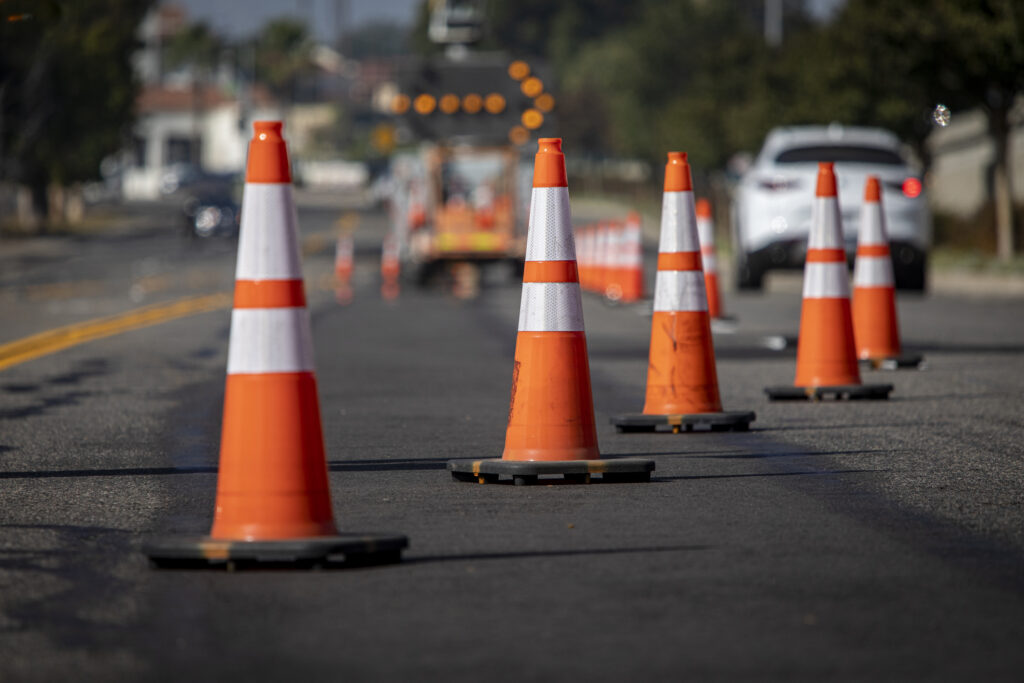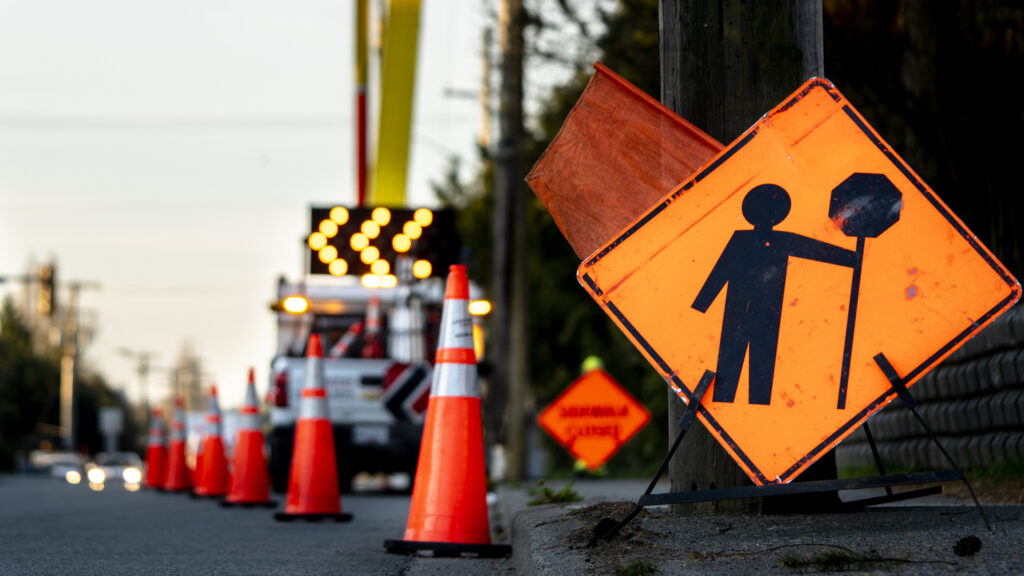
How to use crash evidence, experts, and aggressive legal strategy to maximize compensation
No state has more hazardous or deadly highway construction work zones than Texas – an undisputed fact with disturbing impact. On average more than two people per day are injured in Texas work zone accidents. A fatal work zone collision occurs about every other day in the state, according to the Texas Department of Transportation (TxDOT).
Work zones are common sites on Texas highways like I-35, I-10, FM 1103, and the Loop 410 North. These temporary partitioned or otherwise marked areas aim to protect workers from nearby traffic while they complete infrastructure projects like highway bridge repairs, redesigns and renovations, or road replacement and resurfacing.
Unfortunately, the reality of work zone accidents doesn’t support the effectiveness of these protections.
Commercial trucks exponentially increase work zone crash fatalities
Also known as street or highway construction zones, these highly regulated setups pack a range of new and dynamic challenges for drivers. There may be uneven pavement, narrow lanes, concrete barriers, slow-moving heavy equipment, and vehicles that make sudden stops, among other sudden obstacles. This makes work zones tricky spots for drivers to navigate safely.
Throw a commercial truck into the mix, and the situation goes from tricky to extremely dangerous. In fact, large trucks are involved in 1 out of every 3 fatal accidents in work zones, according to federal data. Yet, commercial trucks only make up 5 percent of the vehicles on the road.
Truck drivers, their employers, and related parties, all have a legal duty to maintain safety on the road at all times – including in construction work zones. If they fail in this responsibility and an accident happens, they need to be held accountable. However, obtaining justice in these cases is frequently easier said than done, because commercial operators aggressively fight claims, and proving fault can be difficult.
When truck operators won’t admit fault in work zone commercial truck accidents …
At Wyatt Law Firm, our San Antonio truck accident lawyers have experience with the blame-shifting, finger-pointing, excuses, and tactics liable parties use in an attempt to wriggle out of accountability. And we don’t put up with it. We use hard evidence, expert testimony, the latest research, our unmatched legal knowledge, and aggressive strategy to make sure the right parties are held responsible for the devastating injuries they inflicted.
Fighting back is the first step to taking control and winning compensation.
If you were injured in a work zone commercial truck accident that wasn’t your fault, Wyatt Law Firm has the experience to put you in a position of power. We offer free consultations and work relentlessly to uncover the truth to win maximum compensation for your losses and truck accident injuries.
In one case, our firm obtained $3,113,963 in net compensation for the family of a fatal 18-wheeler accident victim.
If you’re ready to fight, here’s what you need to know about work zone accidents, reducing crash risk in Texas work zones, how to prove fault, and strategies for collecting compensation.
Harsh realities: Common types of work zone truck accident injuries
Commercial trucks like semi-trucks, tractor-trailer trucks, garbage trucks, delivery box trucks, construction equipment, and other types of large commercial motor vehicles (CMVs) can weigh tons and are capable of towing multiple trailers and loads. Their size and weight mean that any injuries suffered in a truck accident are more likely to be severe, life-altering, or fatal. Often, victims need to add “expensive” to that list, as well.
In work zones, injured people – like construction and DPW workers, flaggers, drivers, passengers, pedestrians, cyclists, police, flaggers, inspectors, excavators, and anyone else using the road – often sustain injuries that require ongoing, potentially lifelong, medical treatment and everyday services. Common severe work zone commercial truck accident injuries include:
- Traumatic Brain Injuries (TBIs)
- Spinal Cord Injuries (SCIs), paralysis
- Severe bone fractures, amputations
- Internal injuries
- Third and fourth-degree burns
- Post-traumatic stress disorder (PTSD), anxiety, depression
Each of these injuries can have a lasting impact on victims and their families. To maintain a level of personal health and comfort, a victim’s injuries may require comprehensive medical care, rehabilitation, and in many cases, adjustments to lifestyle and living conditions to accommodate disabilities. The cost of this ongoing and extensive care can add up quickly to hundreds of thousands or even millions of dollars. And the insurance company does not want to pay for any of it. If victims are to have successful claims, they must thoroughly prove fault.
Texas law and the relationship between crash cause and accident fault
Who is at fault in a work zone truck accident largely depends on how it happened. Texas is an at-fault or tort state. That means that the party, or parties, at fault pay for damages. This makes being at fault a huge responsibility – and something negligent parties would like to avoid. Commercial truck work zone accidents happen for a host of reasons – many of which involve negligence. Common factors that increase crash risk and causes of construction zone truck accidents include:
- Impaired driving, drunk driving, DWI
- Asleep at the wheel
- Speeding
- Defective truck parts
- Tire blowout
- Trucker inexperience, insufficient training
- Unlicensed truckers
- Overweight cargo
- Unsecured freight, cargo shift
This is why finding and proving the cause of a crash through thorough investigation is usually necessary to proving fault.

Being “at fault” in a CMV work zone crash is a big responsibility in Texas
Federal and Texas laws governing work zones and commercial vehicles are specific and create unique evidence that can help prove fault that are not usually available in personal vehicle accidents. The experienced lawyers at Wyatt know all about this special evidence as well as the necessary steps to locate it, protect it, and use it to build a strong case.
Work zone truck accidents often involve multiple parties who are at fault for causing the crash and are therefore liable for damages. Common at-fault parties in commercial truck accidents in work zones include but are not limited to:
- Truck drivers
- Trucking companies
- Truck owner (if different than the trucker or employer)
- Construction companies
- Subcontractors, excavators
- Inspectors and engineers
- Defective parts manufacturers
- Government entities like TxDOT or the San Antonio DPW
Evidence in a work zone truck accident
Another key aspect of proving fault in a commercial truck work zone accident is careful analysis of evidence and smart application of laws. Victims need to work with highly-experienced lawyers who understand the unique types of evidence available in these cases and the best way to leverage them for maximum compensation. Wyatt attorneys are aggressive in uncovering many types of evidence in a work zone CMV accident that typically point to fault, including:
- Police crash report. In every crash, an official accident report is written by the responding law enforcement agency – like the San Antonio Police or the Texas Highway Patrol (THP). The document details the accident scene, lists the involved parties, and may make a preliminary fault assessment.
- Truck’s Electronic Logging Device (ELD) or ‘black box’ data. Many commercial trucks have event data recorders that capture speed, brake application, and other data points at the time of the crash. This information can be critical to a claim’s success but you have to know how to request and obtain the info from an owner who may be reluctant to give it up.
- Recorded Hours of Service. Truckers must record their hours behind the wheel. This document can be checked for violations of federal hours of service restrictions that may have contributed to the crash.
- Dash cam footage. Video from the commercial truck or another nearby vehicle with a dash cam may capture the accident.
- Surveillance video. Likewise, footage from nearby security cameras might have recorded the accident. It is important to contact a lawyer ASAP after an accident so they can locate and preserve potential video before it is destroyed.
- Truck maintenance records. Documentation showcasing the maintenance history of the truck could potentially provide proof of negligence.
- Driver’s employment and training records. Information about the driver’s qualifications, training, and history with the employer could include examples of past accidents.
- Witness statements. Testimonies from bystanders, other drivers, and construction workers who witnessed the accident can be critical to success. It’s important to interview witnesses before their memories become hazy.
- Medical records. Documentation of injuries, treatments, prognoses, and medical expenses related to the accident are strong evidence of damages.
- Construction zone plans and permits. Documents detailing the approved layout and signage for the construction zone, possibly indicating whether the area was adequately marked and safe.
- Toxicology reports. If available and relevant, these test results may determine the influence of alcohol or drugs in the accident.
- Cell phone records. These may be sought to establish whether the truck driver was distracted by a phone call or texting at the time of the accident.
In short, we leave no stone unturned in pursuit of justice and compensation.
Knowing when, and how, to call in expert and scientific work zone CMV crash testimony
Another strong type of evidence that may be used to prove fault in Texas work zone commercial truck accidents is the testimony of expert witnesses. Depending on the circumstances of an individual case, seasoned Wyattlawyers may involve one or more of these professional witnesses to explain the relationship between what caused the accident and who is at fault:
- Transportation Safety Engineering Expert
- Trucking and Warehousing Expert
- Accident Reconstructionist
- Construction and Construction Defects Expert
- OSHA Safety Expert
- Traffic, and Highway Safety Expert
In complicated crashes, these experts may augment a comprehensive investigation that incorporates scientific insights and legal considerations. They can help explain the latest relevant research in a way most people can understand. They may be able to help explain complicated concepts like:
- How work zone configuration influences crash risks
- The relationship between vehicle trajectory data – like Delta Velocity or “Delta V” measures – and injury severity
- Statistical models that analyze driver injury severities in work-zone versus non-work-zone crashes and identify patterns and risk factors that may pinpoint the cause and fault in the crash
Skilled truck accident and work zone injury lawyers in Texas use scientific studies and expert testimony to pinpoint fault in crashes. At Wyatt, our attorneys are well-versed in Texas and federal laws, including those related to construction zones and commercial trucking, to identify any breaches that may have contributed to the accident.

Prevent an accident before it happens: 6 tips to safely navigate Texas construction work zones
Texas officials have promoted safer work zones for years. Yet, the number of catastrophic work zone commercial truck accidents reported each year has been increasing. Individuals can take steps to reduce the risk of work zone accidents. A recent TxDOT campaign – “Be Safe. Drive Smart.” – offered these safety tips for drivers in and around work zones:
- Slow down. Speeding is a major factor in fatal accidents. Follow posted speed limits. Never drive faster than what is safe for road conditions.
- Pay attention. Avoid distractions like texting, eating, changing music, or entering addresses into GPS.
- Watch out for road crews. Be mindful of construction area road signs and follow instructions.
- Don’t tailgate. Traffic in work zones can slow suddenly so give yourself room to stop in a hurry. Rear-end collisions are the most common type of work zone crashes.
- Allow extra time. Road construction will slow you down. Count on it. Plan for it.
- Move over. The campaign also reminds motorists to follow the state’s Move Over/Slow Down law requiring drivers to move over a lane or reduce their speed to 20 mph below the speed limit when approaching work zones.
Although these tips may help reduce crash risk, even the most careful drivers can become the victims of negligent truck drivers failing to safely navigate work zones. When this happens, victims deserve maximum compensation for their injuries and losses.
Get the right Texas truck accident lawyer on your side
Work zone commercial truck accidents are very specific cases. They require attention to detail and knowledge that can only be gained through experience. The pursuit of justice can involve a mix of federal and state regulations, unclear fault, sometimes out-of-state parties involved, and insurance companies that are often reluctant to compensate for serious injuries resulting from a truck accident in a work zone. Sorting through these issues to hold the right party accountable is complex, but at Wyatt Law Firm, no case is too big or technical for our experienced lawyers to handle.
If you were injured in a commercial truck work zone accident in Texas, you may be entitled to substantial compensation but the only way to get it is to hold the at-fault party, or parties, accountable. That’s no small task, but we can handle it. Wyatt Law Firm can take on the claim for you while you focus on healing and getting your life back on track. Contact us for a free case evaluation to learn more about how our San Antonio law firm can help you fight for compensation and justice while holding at-fault parties accountable.
